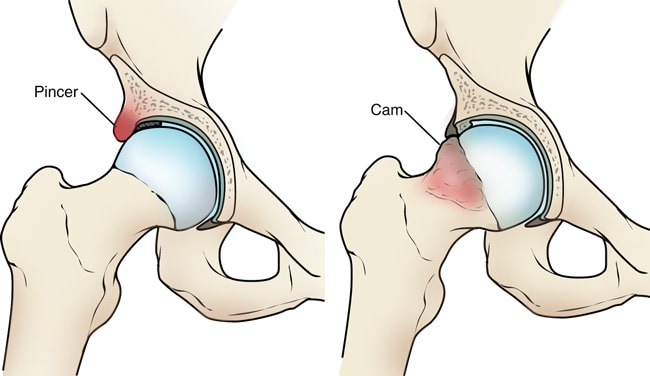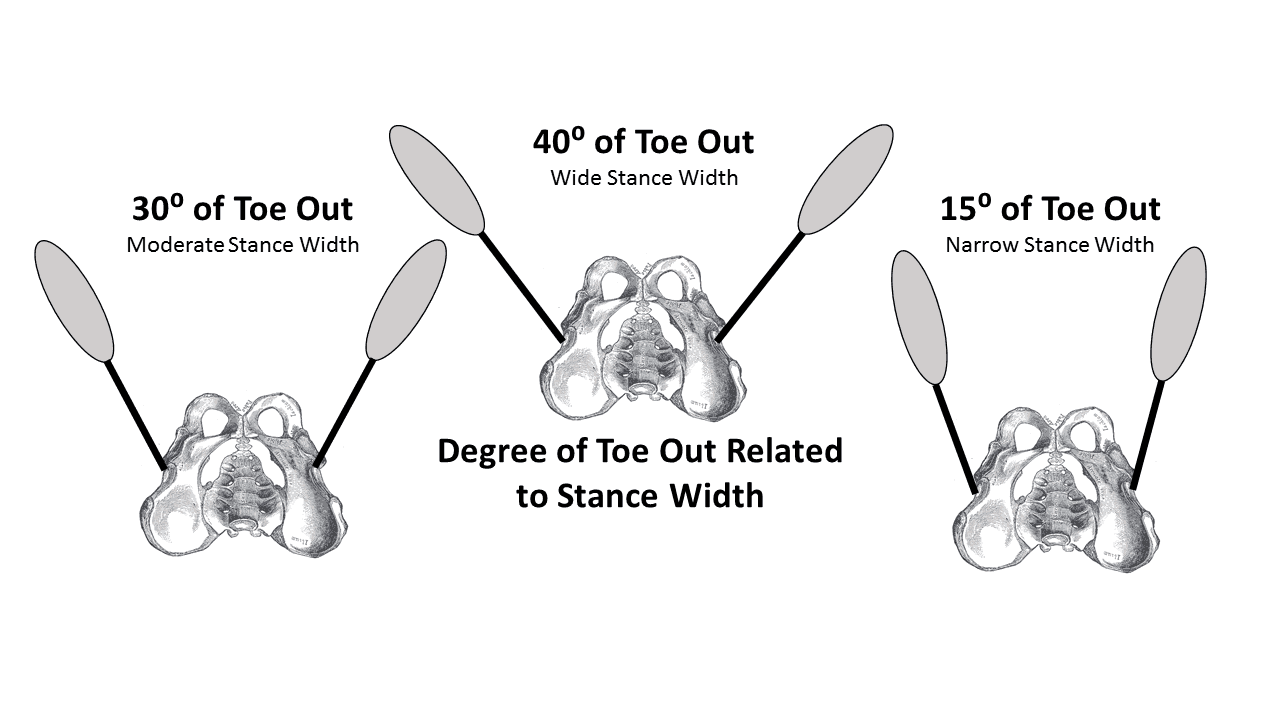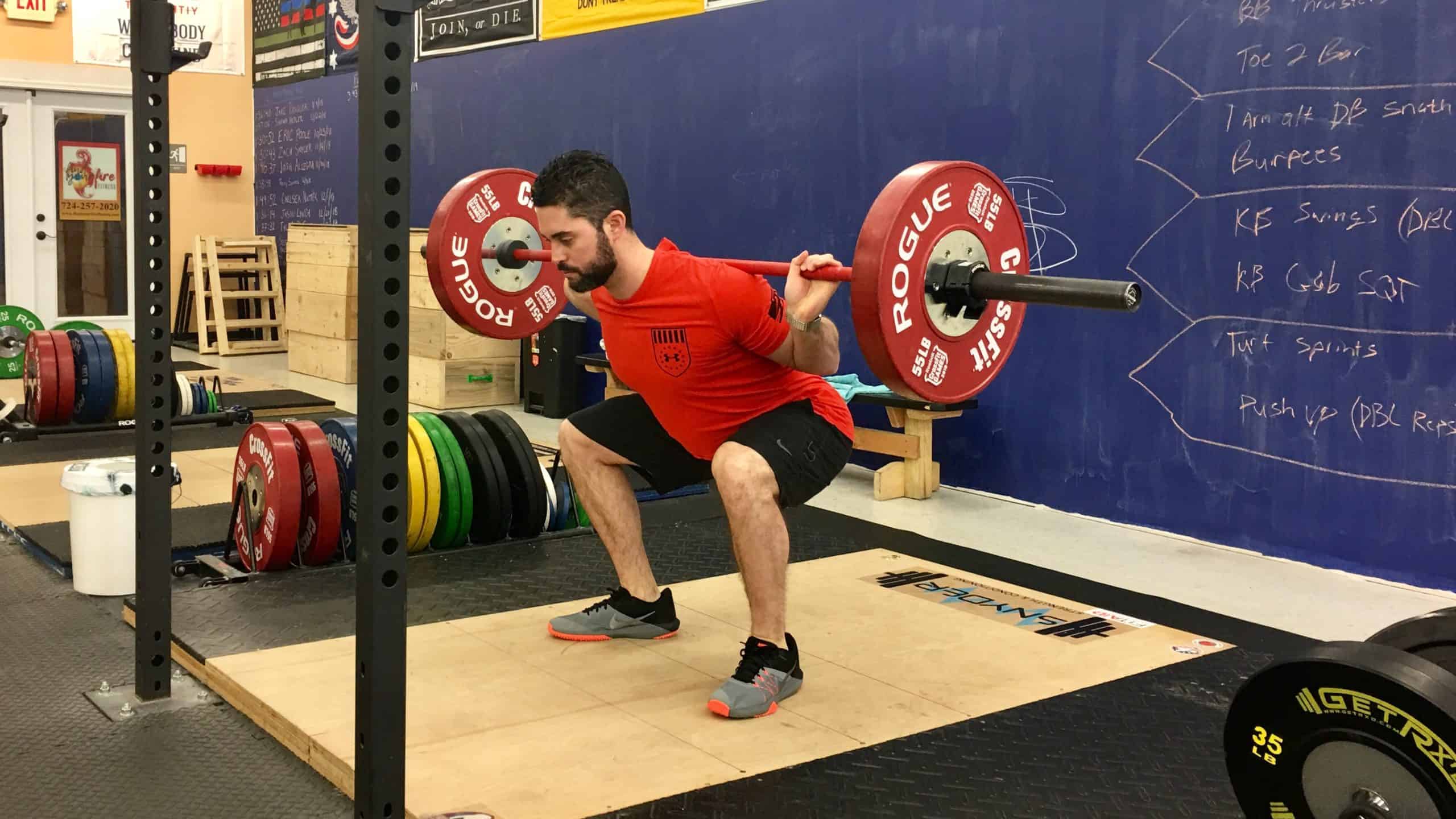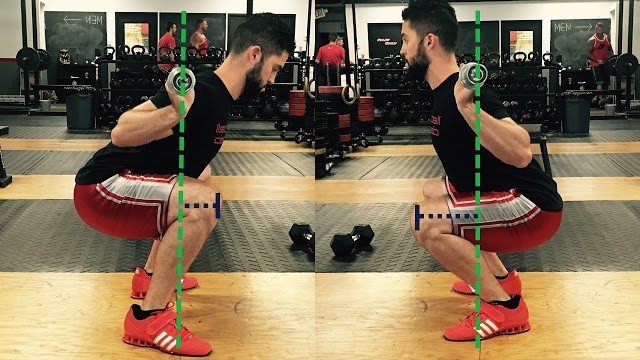In my opinion, the hip thrust is one of the most underutilized weapons in the arsenal of training female athletes. With potential transferable benefits in performance, injury risk reduction, and lower body strength, it is hard to believe that it isn’t the cornerstone of most female strength training programmes.
Female Field Athlete Biomechanics
To truly examine the potential benefits of the hip thrust, one must first understand the demands placed on the female body during field sports. Obviously, it goes without saying that demands of each sport differ, but most field/team sports demand that athletes sprint, cut, jump, and move laterally at varying degrees (1).
The female body deals differently with these forces than males, and as a result, this predisposes us to certain types of lower limb injury.
One Small Step for Man, One Giant Step for Female Knee Extensors
Evaluation of the female biomechanics indicate three issues amongst female athletes:
- Ligament Dominance
- Quadricep Dominance
- Lower Limb Asymmetry
Ligament Dominance
When the surrounding musculature is unable to absorb force adequately, the ligaments can take over, a phenomena called ligament dominance (2). Ligaments that sustain this high amount of force over a short time period are more likely to rupture. To reduce risk of this occurring in the lower limb, the posterior chain muscles must be utilized sufficiently (glute maximus, glute medius, hamstrings and calf muscles). Forces that aren’t absorbed by the muscles will be imparted to lower limb joints and ligaments (most commonly the knee and ankle). (3)
Females are more predisposed to land with the knee in a valgus position (knee joint turning medially, ankle pointing laterally)(3). This makes it difficult for the posterior chain to activate to support the landing, and increases the likelihood of ligament dominance.
Quadriceps Dominance
When landing from a jump/height, women have been shown to rely more on their knee extensor muscles (quadriceps) and utilize their hip extensors (posterior chain muscles) to a much lesser extent than males (4). The ACL acts to resist forward movement of the tibia (5), and by primarily using your quadriceps to stabilise the tibia, you create this repetitive anterior shearing force to the tibia and therefore the ACL.
Preferential use of the posterior chain muscles as opposed to the quadriceps may be advantageous to the athlete. The hamstrings act to posteriorly pull the tibia, and thereby reduces force transmitted by the ACL (4). Males are more likely to activate their hamstrings predominantly when landing, whilst females tend to activate the quadriceps predominantly. This landing pattern is speculated to make women more prone to ACL injuries (6).
However, this does not mean we can dismiss the importance of strong quads for athletes. The quadriceps are vital in sport, assisting in running, jumping and flexing the hip (7). In addition, the vastus medialis is crucial in maintaining both patellar and knee joint stability (8). Therefore, poor quadricep strength can also place females at risk of ACL injuries (9).
Lower Limb Asymmetry
Females tend to be single-leg dominant during tasks requiring side-to-side lower limb symmetry (sudden changes of direction, pivoting, cutting etc.), more so than men (4). These tasks are a common part of many field sports, and may lead to players developing lower limb single-leg dominance (10).
Single-leg dominance may be associated with injury risk during these activities, as it encourages unequal weight and force distribution between the lower limbs. In fact, one study (albeit with a small sample size) found that 100% of the injuries in female netball players occurred on the dominant leg (10).
Discrepancies between lower limbs may be also linked to chronic overuse injuries (read: stress fractures, osteoarthritis) (11). Lower limb motor asymmetry is associated with increased injury risk in non-contact sports, but studies are inconclusive about the degree at which this becomes significant for females (12).
Incidence of Lower Limb Injury Amongst Female Athletes
With the common biomechanical causes of injury discussed, the prevalence of lower limb injuries amongst female athletes will be evaluated. We will mostly focus on the more popular field sports amongst females in Ireland. The author deems these sports to be Gaelic football, rugby, camogie, basketball, soccer, swimming, and running.
Simply being female statistically places you at a higher risk of lower-limb injury than our male counterparts…which is wonderful. Other evidence suggests that being above the ripe-old age of 24, history of injury, and a lower level of fitness when you start training, also contribute to injury risk (13).
Within popular sports in Ireland, lower limb injuries are common. One study of female Gaelic footballers found lower extremity injuries to account for 70% of all injuries (14). Another study conducted amongst county (elite) camogie players found the lower limb injured in 71.4% of cases (15). Areas commonly injured included the hamstrings, Achilles tendon, ankle, and quadriceps. Ankle sprains are also common in sports such as basketball and soccer (16). Females are three times more likely to tear their ACL (17).
With lower limb injuries so commonplace amongst female athletes, what if there was an exercise programme we could prescribe to address this?
Resistance Training and Injury Risk Reduction
With the issues with female biomechanics and our predisposition to injury accounted for, we now enter the good stuff: what we can do to reduce the prevalence of lower limb injury. Obviously, one must first make the disclaimer that this is all speculation based on the literature, and given that this is a blog post and not a scientific study, all claims are to be taken with a pinch of salt.
The Role of Resistance Training
Resistance training has long been associated with a reduction in injury amongst athletes, particularly when it addresses movement biomechanics (18). Resistance training is the most effective means of increasing muscle mass and improving muscular strength and endurance (19).
Earlier in the article, we discussed how increasing muscle activation and power can reduce the force transmitted to ligaments and joints, which can potentially reduce injury risk. Obviously, the reason athletes don’t get injured isn’t due to the fact they have a six pack and rippling quads, but the evidence suggests it can’t hurt. Literally.
The Hip Thrust: The Biomechanical Gift That Keeps On Giving
As previously mentioned, we discussed at length how females are more predisposed to absorb impact through their quadriceps (knee extensor muscles). The hip extensors are also involved to some extent in dealing with these forces. By increasing the strength of the hip extensors (posterior chain musculature), we may decrease reliance on the knee extensors (and by proxy, ligaments and joints) to absorb impact (20).
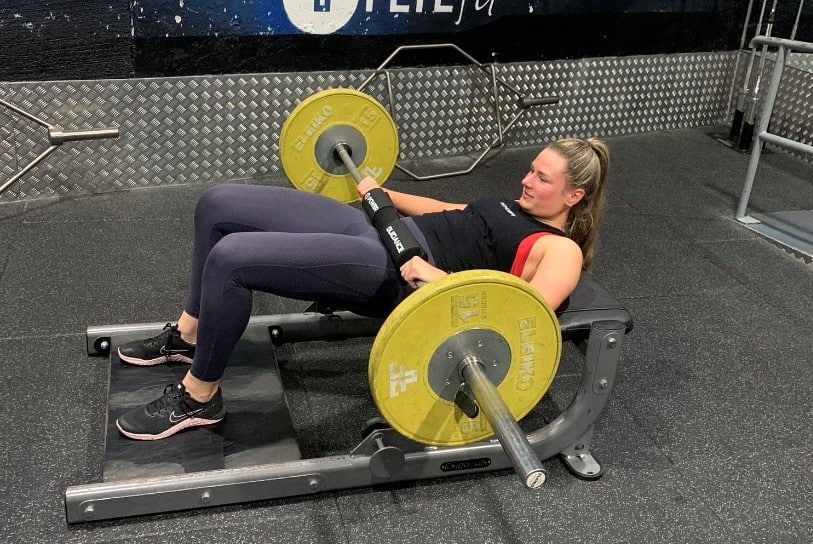
The hip thrust is unique to other conventional movements in that its primary goal is aimed at increasing strength and output of the hip extensors. It recruits the glutes, spinal stabilizers, and knee extensors (21). Traditional strength training programmes for athletes tend to focus on more traditional movements to build lower body strength (e.g. squat, deadlift). A systematic review of the effects of the barbell hip thrust found it to best activate the hip extensors when compared to the deadlift/other conventional lifts (22).
Furthermore, we also recommend including the hip thrust in pre-operative ACL rehab. To read more about this, just head here.
Certainly, for the female athlete, if we are biomechanically lacking in posterior chain activation, directly training the hip extensors may be a step in the right direction to reverse this.
The Hip Thrust for Quadriceps Dominance
The hip thrust may also directly address another deficit that may predispose females to lower limb injury – overreliance on the quads. Studies directly comparing the hip thrust and back squat found the back squat to better activate the quads (23) (24). It is important to note that the hip thrust does still activate the quads, just to a lesser extent.
I would hypothesise that activating the quads more than the posterior chain during strength training may encourage the athlete to be more “quad dominant” on the field too. However, I would also imagine this difference to be minimal. You aren’t going to end up like quadzilla purely from back squatting, nor are you going to end up solely like Kim K from hip thrusting.
But let’s pump the brakes for a second. Having strong quads is unlikely to be disadvantageous to the athlete. However, having an imbalance in strength between quadriceps and posterior chain musculature is likely what creates an issue (25).
I would simply make an argument to include some form of hip thrust in strength training programmes.
Single-Leg Hip Thrust: King of Hip Stability
Single leg hip thrusts, as with any single-leg exercise, can be used to address asymmetry in the lower limb. Single-leg hip thrusts increase recruitment of the hip adductor and abductors (26).
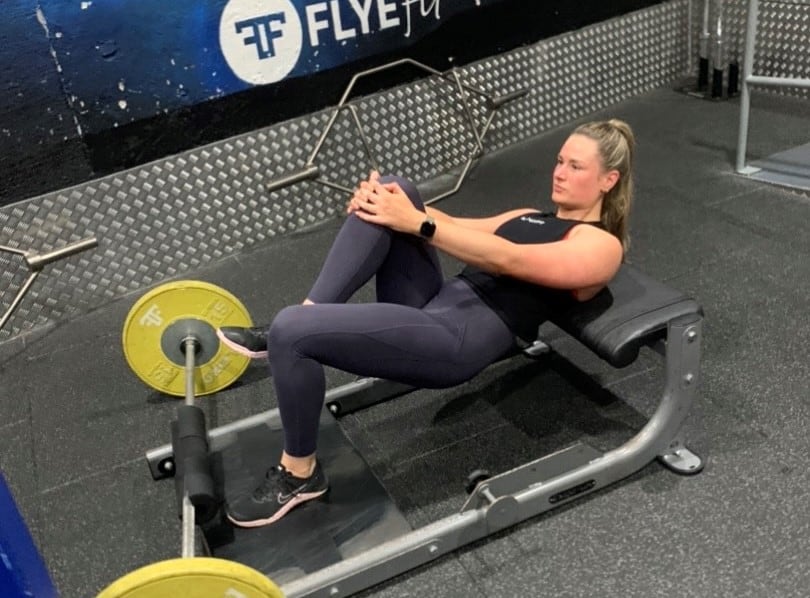
This may help to increase the stability of the hip and knee joints. Furthermore, increasing the strength of the stabilizing muscles has been associated with improved knee and hip joint balance (27).
The Effort of a Hip Thrust
a powerlifting competition or a bodybuilding show. Their prime goal is performance on the pitch. Exercises commonly prescribed as part of strength programmes for these athletes commonly include deadlifts, squat variations, and lunge variations. These movements can be quite demanding on the central nervous system, especially if programmed in a suboptimal manner.
As is well-documented in literature, fatigue and impaired recovery have a negative impact on performance in sports, and is associated with injury (28). Anecdotally speaking, I would say that it is easier to recover from hip thrusts than movements that recruit more of the body (e.g. deadlift).
Obviously, I am not saying that the hip thrust alone is the key to reducing fatigue. Exercise selection is only a part of smart programming. I am merely suggesting that it may be a less fatiguing alternative to other compound movements, all while achieving a similar response.
Conclusion and Final Hip Thrust Thoughts
We conclude yet another one of my love letters to the hip thrust with my usual washing-my-hands-of-any-responsibility spiel. This is only an opinion. Without any study directly examining any of my hypotheses, that’s all they can be: hypotheses. A semi-educated guess.
I did not write this article with the intention to discredit any programme for athletes. Don’t read this and decide to never squat or deadlift again. Those exercises have their own benefits and transferrable skills to sport that aren’t covered by the constraints of this article. I am merely arguing for the inclusion of the hip thrust in female training, and my rationale for same.
Finally, if you have any feedback or comments, I would love to hear from you.
Peace, love and hip thrusts,
Michelle xo
References
- Taylor JB, Wright AA, Dischiavi SL, Townsend MA, Marmon AR. Activity demands during multi-directional team sports: a systematic review. Sports Med. 2017;47(12):2533-2551.
- Ford KR, Myer GD, Hewett TE. Valgus knee motion during landing in high school female and male basketball players: Medicine & Science in Sports & Exercise. 2003;35(10):1745-1750.
- Hewett TE, Ford KR, Hoogenboom BJ, Myer GD. Understanding and preventing acl injuries: current biomechanical and epidemiologic considerations - update 2010. N Am J Sports Phys Ther. 2010;5(4):234-251.
- Stearns KM, Keim RG, Powers CM. Influence of relative hip and knee extensor muscle strength on landing biomechanics. Medicine & Science in Sports & Exercise. 2013;45(5):935–941.
- Duthon VB, Barea C, Abrassart S, Fasel JH, Fritschy D, Ménétrey J. Anatomy of the anterior cruciate ligament. Knee Surg Sports Traumatol Arthrosc. 2006;14(3):204-213.
- Harput G, Soylu AR, Ertan H, Ergun N, Mattacola CG. Effect of gender on the quadriceps-to-hamstrings coactivation ratio during different exercises. Journal of Sport Rehabilitation. 2014;23(1):36-43.
- Willigenburg NW, McNally MP, Hewett TE. Quadriceps and hamstrings strength in athletes. In: Kaeding CC, Borchers JR, eds. Hamstring and Quadriceps Injuries in Athletes: A Clinical Guide. Springer US; 2014:15-28.
- Panagiotopoulos E, Strzelczyk P, Herrmann M, Scuderi G. Cadaveric study on static medial patellar stabilizers: the dynamizing role of the vastus medialis obliquus on medial patellofemoral ligament. Knee Surg Sports Traumatol Arthrosc. 2006;14(1):7-12.
- Goetschius J, Smith HC, Vacek PM, et al. Application of a clinic-based algorithm as a tool to identify female athletes at risk for anterior cruciate ligament injury: a prospective cohort study with a nested, matched case-control analysis. Am J Sports Med. 2012;40(9):1978-1984.
- Maulder PS. Dominant limb asymmetry associated with prospective injury occurrence. South African Journal for Research in Sport, Physical Education and Recreation. 2013;35(1):121-131.
- Zifchock RA, Davis I, Hamill J. Kinetic asymmetry in female runners with and without retrospective tibial stress fractures. Journal of Biomechanics. 2006;39(15):2792-2797.
- Clark NC, Clacher LH. Lower-limb motor-performance asymmetries in English community-level female field hockey players: Implications for knee and ankle injury prevention. Physical Therapy in Sport. 2020;43:43-51.
- Neely FG. Intrinsic risk factors for exercise-related lower limb injuries*: Sports Medicine. 1998;26(4):253-263.
- Chaomhánaigh MEN. Injuries in Adolescents and Coaches’ Attitude towards Injury Prevention in Ladies Gaelic Football.
- Buckley CS, Blake C. The incidence of injury in elite camogie, an in-season prospective study. BMJ Open Sport & Exercise Medicine. 2018;4(1):e000315.
- Brant JA, Johnson B, Brou L, Comstock RD, Vu T. Rates and patterns of lower extremity sports injuries in all gender-comparable us high school sports. Orthop J Sports Med. 2019;7(10).
- Sutton KM, Bullock JM. Anterior cruciate ligament rupture: differences between males and females. J Am Acad Orthop Surg. 2013;21(1):41-50.
- Faigenbaum AD, Myer GD. Resistance training among young athletes: safety, efficacy and injury prevention effects. British Journal of Sports Medicine. 2010:44(1):56-63.
- Hass CJ, Feigenbaum MS, Franklin BA. Prescription of resistance training for healthy populations. Sports Med. 2001;31(14):953-964.
- Stearns KM, Keim RG, Powers CM. Influence of relative hip and knee extensor muscle strength on landing biomechanics. Medicine & Science in Sports & Exercise. 2013;45(5):935–941.
- Contreras B, Cronin J, Schoenfeld B. Barbell hip thrust. Strength & Conditioning Journal. 2011;33(5):58–61.
- Neto WK, Vieira TL, Gama EF. Barbell hip thrust, muscular activation and performance: a systematic review. J Sports Sci Med. 2019;18(2):198-206.
- Barbalho M, Coswig V, Souza D, Serrão JC, Hebling Campos M, Gentil P. Back squat vs. Hip thrust resistance-training programs in well-trained women. Int J Sports Med. 2020;41(05):306-310.
- Delgado J, Drinkwater EJ, Banyard HG, Haff GG, Nosaka K. Comparison between back squat, romanian deadlift, and barbell hip thrust for leg and hip muscle activities during hip extension: Journal of Strength and Conditioning Research. 2019;33(10):2595-2601.
- Willigenburg NW, McNally MP, Hewett TE. Quadriceps and hamstrings strength in athletes. In: Kaeding CC, Borchers JR, eds. Hamstring and Quadriceps Injuries in Athletes: A Clinical Guide. Springer US; 2014:15-28.
- Snarr, Ronald & Eckert, Ryan. (2014). Barbell Hip Thrust. Journal of Sport and Human Performance. 2. 1-9. 10.12922/Jshp.V2i2.37. .
- Hrysomallis C. Hip adductors’ strength, flexibility, and injury risk. J Strength Cond Res. 2009;23(5):1514-1517.
- Kellmann M, Bertollo M, Bosquet L, et al. Recovery and performance in sport: consensus statement. International Journal of Sports Physiology and Performance. 13(2):240-245.


